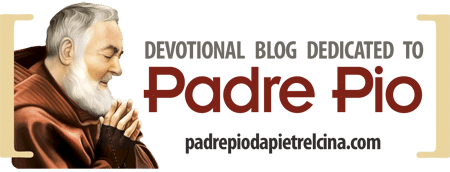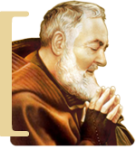2.8K

The life of Padre Pio is marked by extraordinary events that profoundly shaped his spiritual journey and his connection with millions of faithful around the world. The major milestones of his life provide insight into how this humble friar from Pietrelcina became one of the most beloved and venerated figures in the Catholic Church. From his birth in 1887, to receiving the stigmata in 1918, and his canonization in 2002, each significant moment reveals a chapter of a life devoted to faith, love, and sacrifice. Exploring these key moments allows us to better understand the spiritual legacy left by Padre Pio and why his message continues to resonate deeply in the hearts of so many.
Timeline of the Life of Padre Pio
Childhood and Youth
- May 25, 1887: Birth of Francesco Forgione in Pietrelcina (Benevento). Son of Grazio Maria Forgione and Maria Giuseppa Di Nunzio, he showed a deep religious devotion from a young age.
- May 26, 1887: Baptism at the Church of Sant’Anna, marking his entry into the Christian community.
- 1901: In Piana Romana, Francesco tells his parents of his desire to consecrate himself to the Lord. His father emigrates to America to support his studies.
- 1902: He begins the process to join the Capuchin order. After an initial rejection, he is later accepted.
Vocation and Early Mystical Experiences
- January 1, 1903: A vision preannounces a continuous spiritual struggle with Satan, marking the beginning of his mystical experiences.
- January 22, 1903: He enters the Capuchin convent and takes the name Fra’ Pio.
- January 22, 1904: He makes his simple vows (poverty, chastity, and obedience).
- January 27, 1907: He takes his solemn vows, making a definitive commitment to religious life.
- October 1907: He moves to the convent of Serracapriola to study moral theology, under the guidance of Fra Agostino da San Marco in Lamis.
- November 1908: He travels to Montefusco to continue his studies, but is sent back home due to illness.
- December 19, 1908: He receives the Minor Orders and, two days later, the subdiaconate at the Cathedral of Benevento.
- January 1909: He returns to Pietrelcina due to health reasons, with permission to continue his theological studies at home.
- July 18, 1909: He is ordained a deacon.
- August 10, 1910: Ordination to the priesthood at the Cathedral of Benevento at the age of 23.
- September 7, 1910: The beginning of the “temporary” stigmata, a phenomenon that would last until 1917.
Life in San Giovanni Rotondo
- April 17, 1916: He arrives in San Giovanni Rotondo, where he will spend most of his life.
- September 4, 1916: He establishes his permanent residence in San Giovanni Rotondo.
- March 16, 1918: He is exempted from military service due to health reasons.
- March 18, 1918: He returns definitively to the convent of San Giovanni Rotondo.
- September 20, 1918: He receives the “permanent” stigmata, a sign of his union with Christ.
Controversies and Recognition
- 1920: The Holy Office begins investigations into Padre Pio’s mystical phenomena.
- May 31, 1923: The first decree from the Holy Office (non constat de supernaturalitate), expressing reservations about the phenomena of Padre Pio.
- 1924: Dr. Giorgio Festa requests further investigations, but is not granted authorization.
- 1931: The second decree from the Holy Office, with restrictions on his activities.
- 1933: Pope Pius XI lifts the restrictions, granting Padre Pio full ministerial freedom.
Works of Charity and Final Years
- January 9, 1940: The construction of the Casa Sollievo della Sofferenza (Home for the Relief of Suffering) begins, symbolizing his charity towards the sick.
- 1960: Pope John XXIII orders new investigations into Padre Pio’s mystical phenomena.
- July 30, 1964: Pope Paul VI restores Padre Pio’s liturgical freedoms.
- September 22, 1968: He celebrates his last Mass and gives his final blessing to the crowd.
- September 23, 1968: Padre Pio passes away at the age of 81 in San Giovanni Rotondo.
Beatification and Canonization
- 1969: The beatification process begins.
- January 21, 1990: Padre Pio is declared Venerable by Pope John Paul II.
- May 2, 1999: Beatification of Padre Pio.
- June 16, 2002: Canonization of Padre Pio, officially declared a saint.
Commemoration
- September 23: Feast day of Saint Pio of Pietrelcina, celebrated annually in honor of his life and Christian virtues.







